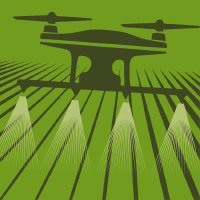Topic Menu
► Topic MenuTopic Editors




Emerging Agricultural Engineering Sciences, Technologies, and Applications

A printed edition is available here.
Topic Information
Dear Colleagues,
Modern agricultural engineering technologies and applications are directly linked with the 2030 United Nations’ Sustainable Development Goals (UN-SDGs). Technological advancement is essential to next-generation agriculture in order to ensure food security, poverty alleviation, and sustainability. Worldwide, it is directly associated with farm mechanization; automation and robotics; intelligent agriculture; high-efficiency irrigation systems; indoor farming and soilless agriculture; precision/conservation agriculture; farm energy systems; post-harvest storage/processing and value addition; tillage and cultivation; spraying and harvesting machinery; livestock and poultry sheds; safe utilization of coal and bioenergy; remote sensing and geographical studies; wastewater management; societal aspects in agriculture; and the associated bioenvironment. Consequently, this topic aims to explore the interdisciplinary nature of research on such agricultural engineering sciences, technologies, and applications from the viewpoint of the agricultural water–energy–food-security nexus. Increasing agriculture modernization mitigates conventional energy reserves, which also escalates greenhouse-gas emissions and climate change. Carbon-neutral development and clean-energy utilization are also associated with the UN-SDGs. Thus, it is important to develop energy-efficient and environmentally friendly solutions to ensure the agriculture sector achieves the UN-SDGs.
This topic invites a wide range of emerging concepts on the agricultural engineering technologies and applications by which sustainable agriculture and associated UN-SDGs can be ensured. We look forward to receiving cutting-edge original research, review, case studies, and/or recent progress/scenarios.
Dr. Muhammad Sultan
Dr. Yuguang Zhou
Dr. Redmond R. Shamshiri
Dr. Muhammad Imran
Topic Editors
Keywords
- biomass, bioenergy, and clean fuel
- farm mechanization and robotics
- food science and processing
- high-efficiency irrigation systems
- hydroponic and aeroponic agriculture
- irrigation systems and applications
- modern control sheds and livestock barns
- next-generation greenhouses
- precision farming and food security
- renewable energy for agriculture
- smart and sustainable agriculture
- solar dryers and solar pumping
- sustainable bioenvironment
- temperature/humidity control in agriculture
- water and wastewater treatment
Participating Journals
| Journal Name | Impact Factor | CiteScore | Launched Year | First Decision (median) | APC |
|---|---|---|---|---|---|

Agriculture
|
3.3 | 4.9 | 2011 | 19.2 Days | CHF 2600 |

AgriEngineering
|
3.0 | 4.7 | 2019 | 21.8 Days | CHF 1600 |

Energies
|
3.0 | 6.2 | 2008 | 16.8 Days | CHF 2600 |

Sustainability
|
3.3 | 6.8 | 2009 | 19.7 Days | CHF 2400 |

Water
|
3.0 | 5.8 | 2009 | 17.5 Days | CHF 2600 |

MDPI Topics is cooperating with Preprints.org and has built a direct connection between MDPI journals and Preprints.org. Authors are encouraged to enjoy the benefits by posting a preprint at Preprints.org prior to publication:
- Immediately share your ideas ahead of publication and establish your research priority;
- Protect your idea from being stolen with this time-stamped preprint article;
- Enhance the exposure and impact of your research;
- Receive feedback from your peers in advance;
- Have it indexed in Web of Science (Preprint Citation Index), Google Scholar, Crossref, SHARE, PrePubMed, Scilit and Europe PMC.

